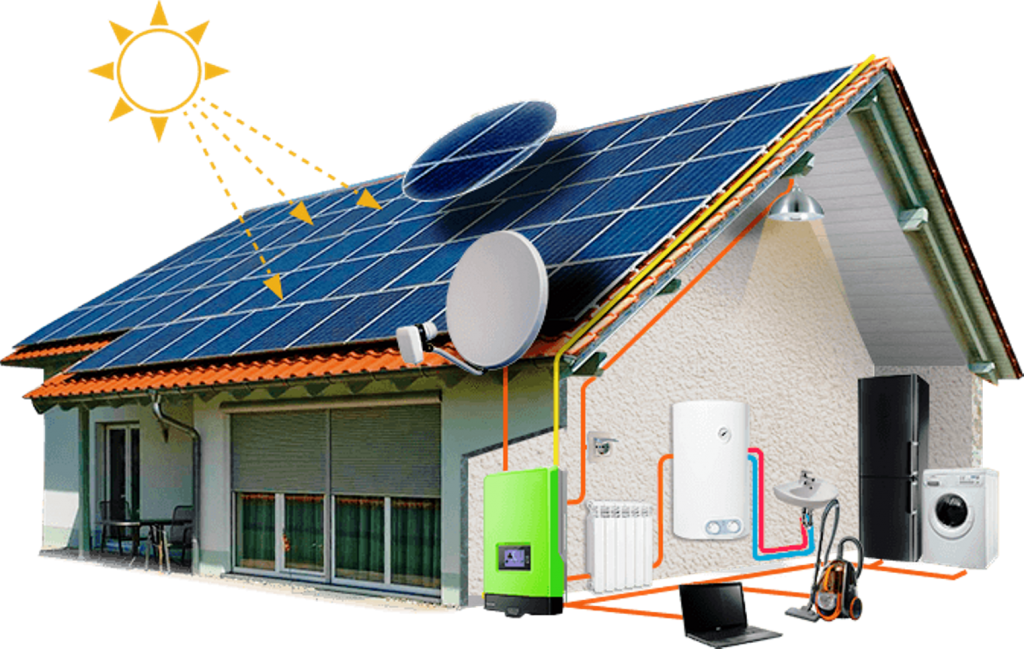Where are solar modules most commonly used?
The area of application for solar modules is huge. They are already being used successfully to power private and multi-family homes and households, including lighting and heating greenhouses and buildings, lighting the surrounding area and powering devices.
Most often, autonomous power supply is considered in the following cases:
• If the area is not electrified, solar panels for a private home will cost much less than using oil generators.
• In rural areas, electricity is often shut off, leaving people literally without power. By turning on the autonomous power supply, you can live in the usual comfort for a long time, especially since a battery is always included with solar panels.
• Apartment buildings also use solar panels as a backup, and there are projects that use solar energy to heat water.
Lifespan of solar modules
The documentation for devices usually states a shelf life of 20 to 25 or even 30 years. However, many devices continue to work even after the time period specified by the manufacturer. For example, the world’s first solar battery has been in operation for over 60 years, and over the years the production technology has improved significantly.

If you follow simple recommendations, the service life of solar panels can be increased:
• Avoid physical damage such as falling trees, gusts of wind, and scratches on the sensors. The efficiency of the device depends on the latter.
• Regular maintenance: maintenance and cleaning.
• If necessary, install windbreaks.
Solar modules for a private house (ready-made kits) include the following components in the system: batteries and power electronics. The service life of the first devices is from 2 to 15 years, that of the second – from 5 to 20 years, depending on the characteristics, intensity of operation and careful maintenance.
General characteristics and availability of purchase
The device does not harm the environment and provides a stable power supply without voltage spikes. And most importantly, it provides free energy with no utility bills.
The solar panel converts light into electrical energy by generating direct current. The area of the panels can reach several meters. If the performance of the system needs to be increased, increase the number of modules. Their effectiveness depends on the intensity of sunlight and the angle of incidence of the rays: the location, the season, the climatic conditions and the time of day. In order to correctly take into account all these nuances, the installation should be carried out by professionals.
Types of modules:
• Monocrystalline.
Consist of silicon cells that convert solar energy. Differ in compact sizes. In terms of performance, this is until recently the most efficient (efficiency up to 22%) solar battery for the home. A set (its price is one of the most expensive) costs from 100,000 rubles.
• Polycrystalline.
They use polycrystalline silicon. They are not as efficient (up to 18% efficiency) as monocrystalline solar cells. However, because they are much cheaper, they are available to the general population.
• Amorphous.
They have thin-film solar cells based on silicon. They are inferior to mono and polycrystals in terms of energy production, but are also cheaper. Their advantage is the ability to function in diffuse and even weak light.
• Heterostructural.
Modern and most efficient solar modules today with an efficiency of 22-25% (over their entire service life!). They work effectively in both cloudy weather and high temperatures.
The system also includes the following components:
• An inverter that converts direct current to alternating current.
• Accumulator battery. Not only does it store energy, but it also compensates for voltage drops when light levels change.
• Controller for battery charging voltage, charging mode, temperature and other parameters.
You can purchase individual components as well as entire systems from us. The performance of the devices is determined based on needs.
The principle of operation of a solar power plant at home
A solar power plant is a system consisting of modules, an inverter, a battery and a controller. The solar panel converts radiant energy into electricity (as mentioned above). Direct current enters the controller, which distributes the power to consumers (for example, a computer or lighting). An inverter converts direct current into alternating current and powers most household electrical appliances. The battery stores energy that can be used at night.





